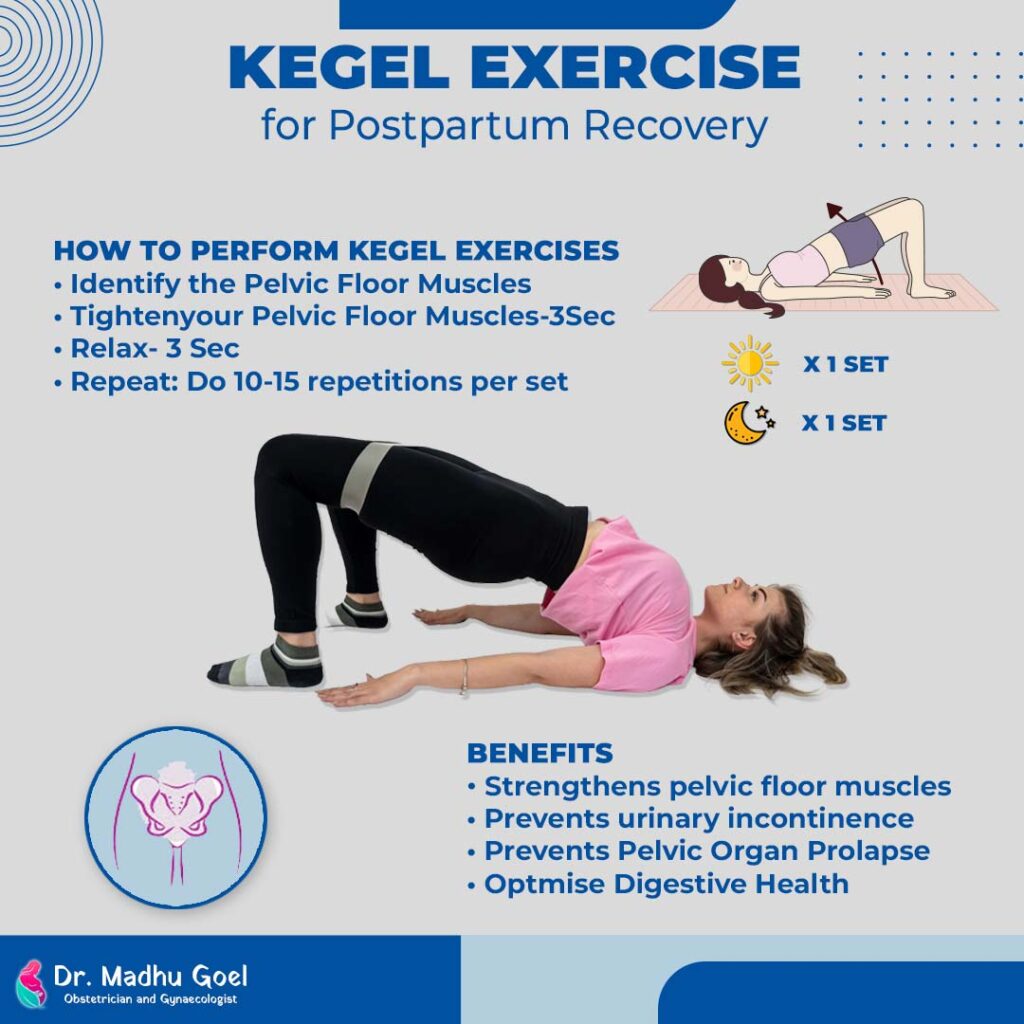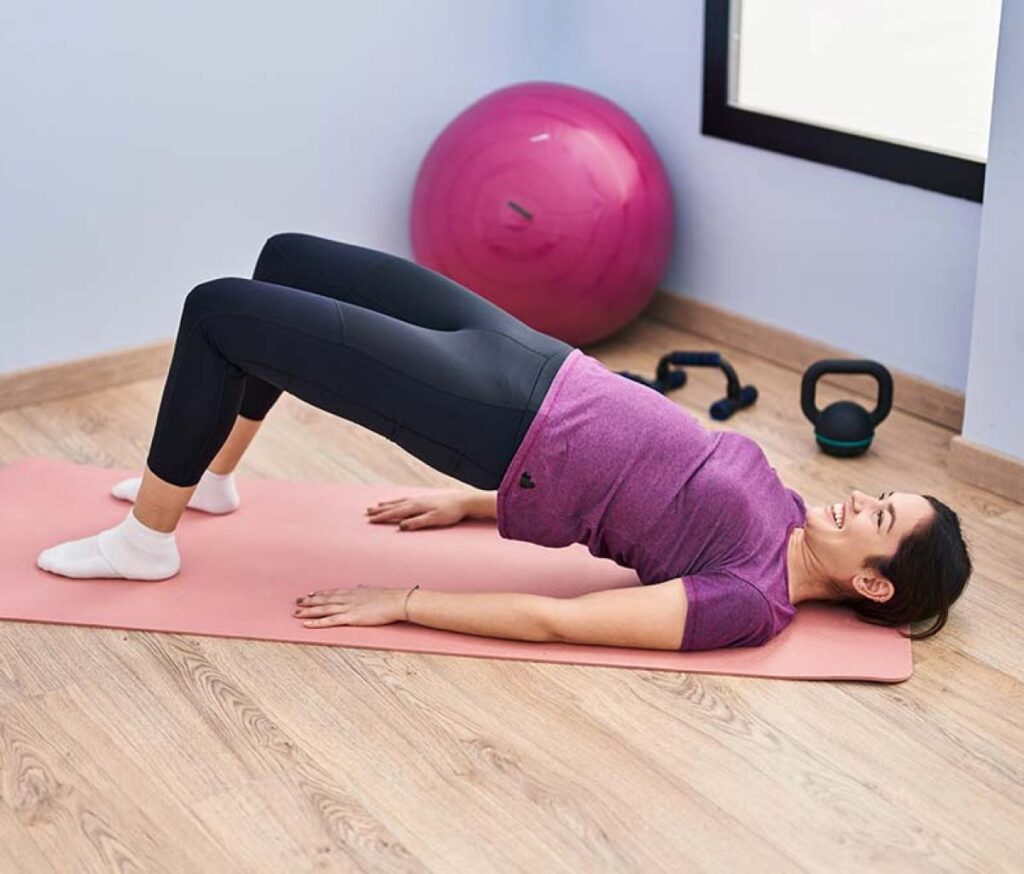Have you ever laughed, sneezed, or jumped only to feel a little leak? You’re not alone — and Kegels may be the solution. These simple yet powerful exercises train your pelvic floor muscles, helping you stay strong, confident, and in control at every stage of life.
The pelvic floor is one of the most underrated muscle groups in a woman’s body. Hidden yet powerful, these hammock-like muscles support the bladder, uterus, and bowel. When strong and coordinated, they provide bladder control, core stability, and even boost sexual health. When weak, they may lead to urinary leakage, prolapse, or discomfort that many women silently endure.
The truth? Pelvic floor weakness can happen to any woman—not just postpartum moms or women in menopause. Even 18-year-old athletes and sporty women may develop leaks, pelvic heaviness, or discomfort if these muscles are under constant stress. The good news is that with Kegel exercises, you can train your pelvic floor just like you would train your biceps or glutes—gently, consistently, and with life-changing results.
What Do Kegel Exercises Actually Do?
Think of Kegels as strength training for your inner support system. Just as lifting weights sculpts and protects your body, Kegels keep your pelvic floor “fit.”
Key benefits include:
-
Better bladder and bowel control: Preventing leaks of urine, stool, or gas.
-
Improved core stability: Supporting your posture and lower back.
-
Enhanced intimacy: Increasing blood flow, sensation, and confidence.
-
Pregnancy & postpartum support: Helping with labor, delivery, and recovery.
-
Prevention of prolapse: Reducing the risk of pelvic organs dropping due to weak muscles.
Who Should Be Doing Kegels?
Anything that puts repeated pressure on your pelvic floor can weaken it. That means nearly all women benefit from strengthening these muscles.
Risk factors for pelvic floor weakness include:
-
Pregnancy and childbirth (both vaginal and C-section)
-
High-impact sports (running, jumping, heavy lifting)
-
Obesity or being overweight
-
Aging (muscles naturally lose tone with time)
-
Pelvic surgery
-
Chronic constipation or coughing
💡 Important note: Pelvic floor problems aren’t exclusive to moms or older women. Teenagers, young women, and athletes can also develop leakage or weakness, especially if they push their bodies hard.
How to Find Your Pelvic Floor Muscles
The pelvic floor can be tricky to locate. Here are a few ways to identify it:
-
Imagine you’re trying to stop yourself from passing gas.
-
Insert a clean finger into your vagina and gently squeeze around it—you should feel a lift and tightening.
-
Visualize a claw machine at an arcade: the claw drops, grabs a prize, and lifts it upward. That lifting motion is what a correct Kegel feels like. Or picture an elevator (lift) going up: as you contract, imagine the “elevator” rising one floor at a time inside your pelvis, then slowly coming back down as you release.
🚫 Don’t make a habit of stopping urine mid-flow—it’s fine once to identify the muscles, but repeating it can cause bladder problems.
How to Perform Kegel Exercises Step by Step

- Get comfortable: Start lying on your back with knees bent if you’re new to it. Progress to sitting or standing as you get stronger.
-
Squeeze & lift: Tighten your pelvic floor as though you’re lifting it upward inside your body.
-
Hold: Start with 3 seconds, then relax for 3 seconds.
-
Repeat: Aim for 10 reps in one set.
-
Build strength: Over time, work up to holding each squeeze for 5–10 seconds, relaxing for the same time, and completing 2–3 sets of 10 reps per day.
🌸 Pro tip: Breathe normally, and make sure your abs, thighs, or glutes aren’t tensing—you want the focus on the pelvic floor only.
Sample Daily Routine

- Morning: 1 set of 10 reps (3–5 second holds) while brushing your teeth.
-
Afternoon: 1 set of 10 reps of quick squeezes (1-second up, 1-second relax) while waiting for coffee or tea,
-
Evening: 1 set of 10 reps (5-second holds) while lying in bed.
➡️ Your long-term goal: 2–3 sets of 10 Kegels daily, each held for 5–10 seconds with equal relaxation time.
Beyond Kegels: Helpful Complements
Kegels are powerful, but sometimes women need extra support:
-
Pelvic floor physiotherapy: A women’s health physiotherapist can confirm you’re contracting the right muscles and tailor a program to your needs.
-
Devices such as the iTouch Sure pelvic floor stimulator: Gentle electronic stimulation can help women who struggle to activate their pelvic floor on their own.
-
Kegel balls : Once you’ve mastered the basics, these can add resistance, similar to weights for other muscles.
-
Lifestyle support: Prevent chronic constipation, manage body weight, and avoid straining, which all reduce pelvic floor stress.
Common Mistakes to Avoid
-
Holding your breath
-
Bearing down instead of lifting up
-
Doing too many (yes, overtraining can cause tension or pain)
-
Engaging the wrong muscles (glutes, thighs, or abs)
-
Only doing Kegels when problems start, rather than as prevention
How Long Until You See Results?
Consistency is everything. Most women notice changes—like fewer leaks or less urgency—after 6–12 weeks of daily practice. Stronger pelvic floors mean more confidence in workouts, less worry during laughter, and greater control in daily life.
FAQs About Kegel Exercises
Can young women do Kegels, or is it just for older women?
Anyone can benefit. Even active 18-year-olds or athletes may develop leakage from high-impact training. Kegels are preventive as much as they are corrective.
How do I know if I’m doing them right?
If your stomach, back, or thighs are tensing, you’re using the wrong muscles. A physiotherapist can provide biofeedback to confirm proper engagement.
Is it safe to do Kegels during pregnancy?
Yes, and it may make delivery easier while supporting recovery. Always check with your OB-GYN for guidance.
Can I overdo Kegels?
Yes. Just like any muscle, the pelvic floor can become overly tight. Stick to short, regular sessions and allow relaxation between holds.
Do devices really help?
Tools such as iTouch Sure or Kegel balls can help women who struggle to feel the contraction, but they’re not essential. Think of them as a complement, not a substitute.
How many seconds should I hold a Kegel?
Start with 3 seconds and gradually increase to 8–10 seconds as you get stronger. Always match your hold with equal relaxation time.
How do I know if my pelvic floor is strong?
Fewer leaks, reduced urgency, better bowel control, and an easy ability to contract and release your muscles are all signs of strength.
Is sitting or standing better for Kegels?
Both work. Beginners may find lying down easiest. As your strength improves, practice sitting, standing, and even during daily activities.
Can Kegels help with prolapse prevention?
Yes. Regular pelvic floor training strengthens the support system for your pelvic organs, which may reduce the risk or progression of pelvic organ prolapse.
Final Takeaway
Your pelvic floor is as vital as your heart, your glutes, or your abs—yet it rarely gets the spotlight. Daily Kegel practice is one of the simplest, most effective ways to protect your body now and in the decades to come.
Whether you’re an athlete, a new mom, or simply looking to age with strength, making Kegels part of your everyday routine is a small habit with huge benefits. And if you ever feel unsure, don’t hesitate to reach out to a pelvic floor specialist—they can guide you toward a healthier, more confident you.
✨ Start today: 2–3 sets of 10 Kegels daily, holding each for 5–10 seconds. Your pelvic floor will thank you.
💡 Want to dive deeper into why the pelvic floor is so often overlooked — and what happens when we ignore it? Don’t miss my article: The Hidden Muscle Most Women Ignore (Until It’s Too Late) — How to Protect Your Pelvic Floor.
**This article is for educational purposes only and is not intended as medical advice. Always consult with a qualified healthcare provider before beginning new exercises, especially during pregnancy, postpartum, or if you have pelvic pain or concerns.
